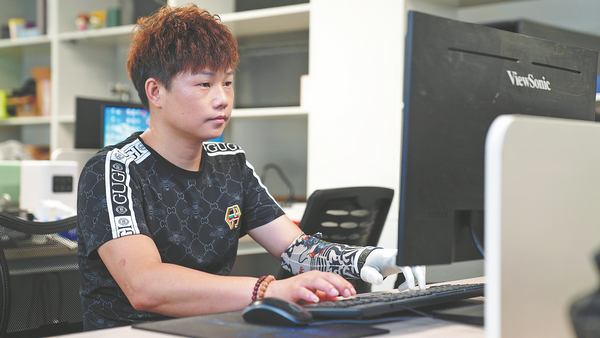

Company device allows those who lost a limb to retake control of their lives, reports He Qi in Shanghai.
After losing his left forearm during a workplace accident a few years ago, Wu Zheng'an fell into a depression and was constantly worried that he would never be able to work again.
"I couldn't accept the new reality," recalls the 37-year-old, who was operating a crusher at a construction site in Guangdong province when the accident occurred. "I even advised my wife to divorce me because I didn't want to be a burden to her."
For a long while, Wu had to survive on the support provided by his family as he couldn't find a proper job.
But he finally caught a glimpse of the light at the end of the tunnel in March 2020 when he chanced upon a video clip of a smart bionic hand called OHand on social media platform Douyin.
Wu did not hesitate to give the product a go, and he now describes that decision as life-changing.
Unlike traditional artificial limbs, OHand has signal sensors that track changes in skin morphology and intention signals related to finger movements transmitted through muscles. The signals are then sent through the skin to the bionic fingers.

Created by Shanghai-based OYMotion Technologies, OHand weighs just 495 grams and allows users to perform dozens of tasks like pinching and holding chopsticks.
Although the bionic hand is priced at 118,000 yuan ($16,414), the company offered the device for a bargain price of 38,000 yuan to the Shanghai Disabled Persons' Federation, and local residents pay just 3,800 yuan, with the rest covered by the federation. The device was listed in the subsidy catalog for conventional aids for the disabled last year.
Authorities in Hunan province and Guangxi Zhuang autonomous region are developing a policy, under which users pay 10 percent of the cost, with local government subsidizing the balance.
Though Wu is a Guangxi native, he was given a 30,000 yuan discount by OYMotion Technologies so that he could cover the rest of the cost using the insurance payout for the accident.